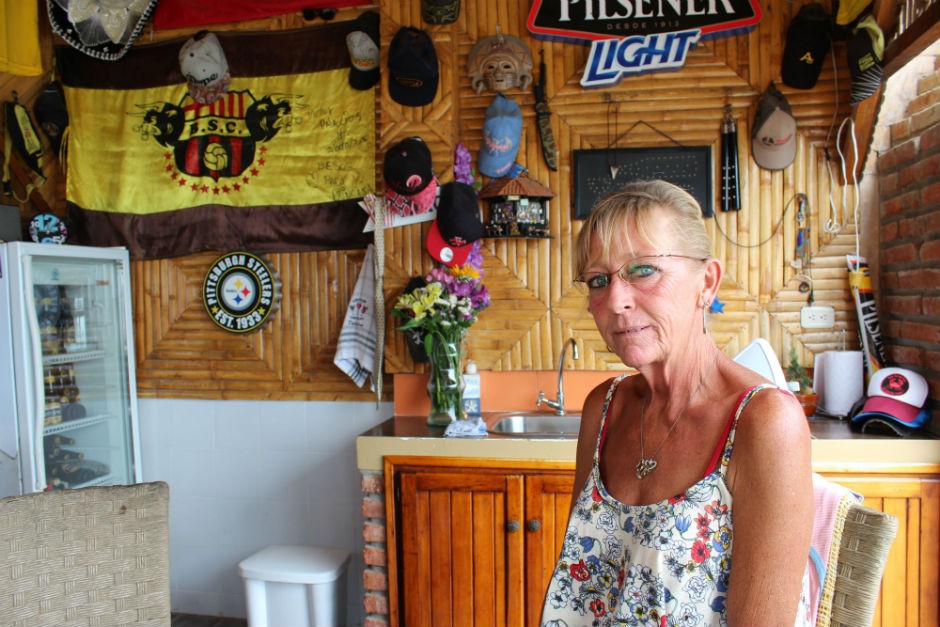Lea Kabiljo is a doctoral candidate in the Art Education program at Concordia, having obtained her Bachelor and Master's degrees from the same department. Prior to returning to Concordia to pursue her PhD she worked as a high school teacher and was the executive director of LOVE: Leave Out Violence, a leading non-profit organization in violence prevention for youth.
Blog post
Through her eyes: photographs as storytellers

I was 15 years old when I first saw an exhibit of works by Annie Leibovitz. I remember coming home from the museum that day and announcing proudly to my parents that I have found my life calling; I was going to be a photographer. As I moved on to college and pursued a degree in professional photography, I learned new tricks and techniques and acquired all the skills necessary to make me a great photographer.
But something was missing. I was uncomfortable taking pictures of people. When I did photo shoots in studio settings, they felt fake, empty and forced. Even though the lighting was perfect and the model was right, the photographs I produced resembled technical exercises more than the portraits I aimed to achieve. I felt uncomfortable, voyeuristic, an intruder of privacy.
I realized that all the elaborate equipment, techniques and tricks were not enough when it came to creating what I considered to be a true portrait — an image that somehow is successful in portraying not just the physical, but also that which Bartes refers to as the value, or the air of a person.
It was through my practice of oral history that I was finally able to reconcile the struggle I always had with portrait photography. In the summer of 2017, I spent three months in the village of Santa Marianita, Ecuador, where, as part of the coursework for my doctoral studies, I interviewed and photographed nine individuals.
I conducted life story interviews with each one of them and photographed them after the interview, as their last words still lingered in the air. Through this project, I developed a methodology that allowed me to extend the approach of the oral history interview to my photographic practice. I examined different ways in which the oral history interview can help elicit photographs that reveal the inner lives of the interviewees.
Each of the interviews I conducted was unique, but it was the interview with Dalalene that probably marked me the most.
Dalalene was in her early 50s and had moved from Saskatoon to Santa Marianita five years prior. She was probably one of the most eccentric characters who lived there. Her yard was always open to anyone who wanted to stop by, and almost every day would turn into some sort of a party. People were constantly coming and going, and Dalelene, always happy and with a smile, was in the middle of it all.
Finding myself alone with her on the day of the interview made me nervous and uncomfortable at first. The empty, quiet yard felt almost eerie.
During the interview, Dalelene was very open and frank; she revealed to me the other side of the party woman everyone on the beach knew her as. Her story was moving and emotional, and as I listened to her, I realized that her always-present smile was also a way of coping with lots of pain that she experienced in her life.
As the interview ended, we remained pensive and quiet for some time, both processing the experience we shared. Initially, I had planned to come back and photograph Dalelene at a different time, like I did in my previous interviews. However, there was something about that moment, a feeling of closeness and intimacy between us that prompted me to want to take a photograph of her.
I asked for her permission as this was not part of the original plan. I knew Dalelene cared about her appearance a lot and would probably prepare herself differently on the day of the photo shoot. I only took one picture. Initially this wasn’t intended for the project at all, but more as a personal memento — a memory of a beautiful moment we shared together for me to keep.
Later that evening I looked at that picture for a long time, thinking about Dalelene and the story she shared with me. I understood that, no matter how hard I tried, I would never again be able to capture her as I had in that shot.
I recalled the words by Barthes and his reflection on photographs that capture what he refers to as the air of a person:
Thus the air is the luminous shadow which accompanies the body; and if the photograph fails to show this air, then the body moves without the shadow, and once this shadow is severed, as in the myth of the Woman without a Shadow, there remains no more than a sterile body.
And here she was, Dalelene, looking right back at me. She did not seem posed, or candid or vulnerable.
She was just there, a woman embracing her shadow.
Reference
Barthes, R. (1981). Camera lucida: Reflections on photography. Macmillan.
About the author


